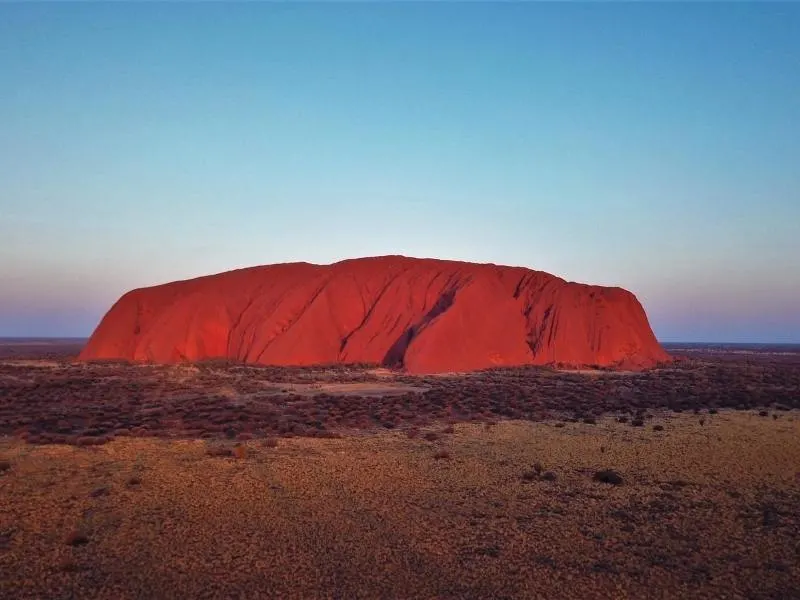If you enjoy visiting UNESCO World Heritage Sites and are planning a trip to Australia why not try to include some of the sites that are on the world heritage list for Australia in your itinerary?
The answer to the question “How many world heritage sites are in Australia?” is 20 as of July 2023. In 2019 Budj Bim was approved at a meeting of the world heritage committee and inscribed on the list making 20. There are also 4 areas that are on the Australia world heritage tentative list.
Out of the total of 20 UNESCO World Heritage Sites in Australia, 4 are cultural, 12 are natural and 4 are a combination.
This is the full list of World Heritage Sites Australia
Cultural (3)
- Australian Convict Sites (2010)
- Royal Exhibition Building and Carlton Gardens (2004)
- Sydney Opera House (2007)
- Budj Bim Cultural Landscape (2019)
Natural (12)
- Australian Fossil Mammal Sites (Riversleigh / Naracoorte) (1994)
- Fraser Island (1992)
- Gondwana Rainforests of Australia (1986,1994)
- Great Barrier Reef (1981)
- Greater Blue Mountains Area (2000)
- Heard and McDonald Islands (1997)
- Lord Howe Island Group (1982)
- Macquarie Island (1997)
- Ningaloo Coast (2011)
- Purnululu National Park (2003)
- Shark Bay, Western Australia (1991)
- Wet Tropics of Queensland (1988)
Mixed (4)
- Kakadu National Park (1981,1987,1992)
- Tasmanian Wilderness (1982,1989)
- Uluru-Kata Tjuta National Park (1987,1994)
- Willandra Lakes Region (1981)
All these sites are covered in this post about UNESCO World Heritage Sites in Australia by top travel bloggers from around the world.
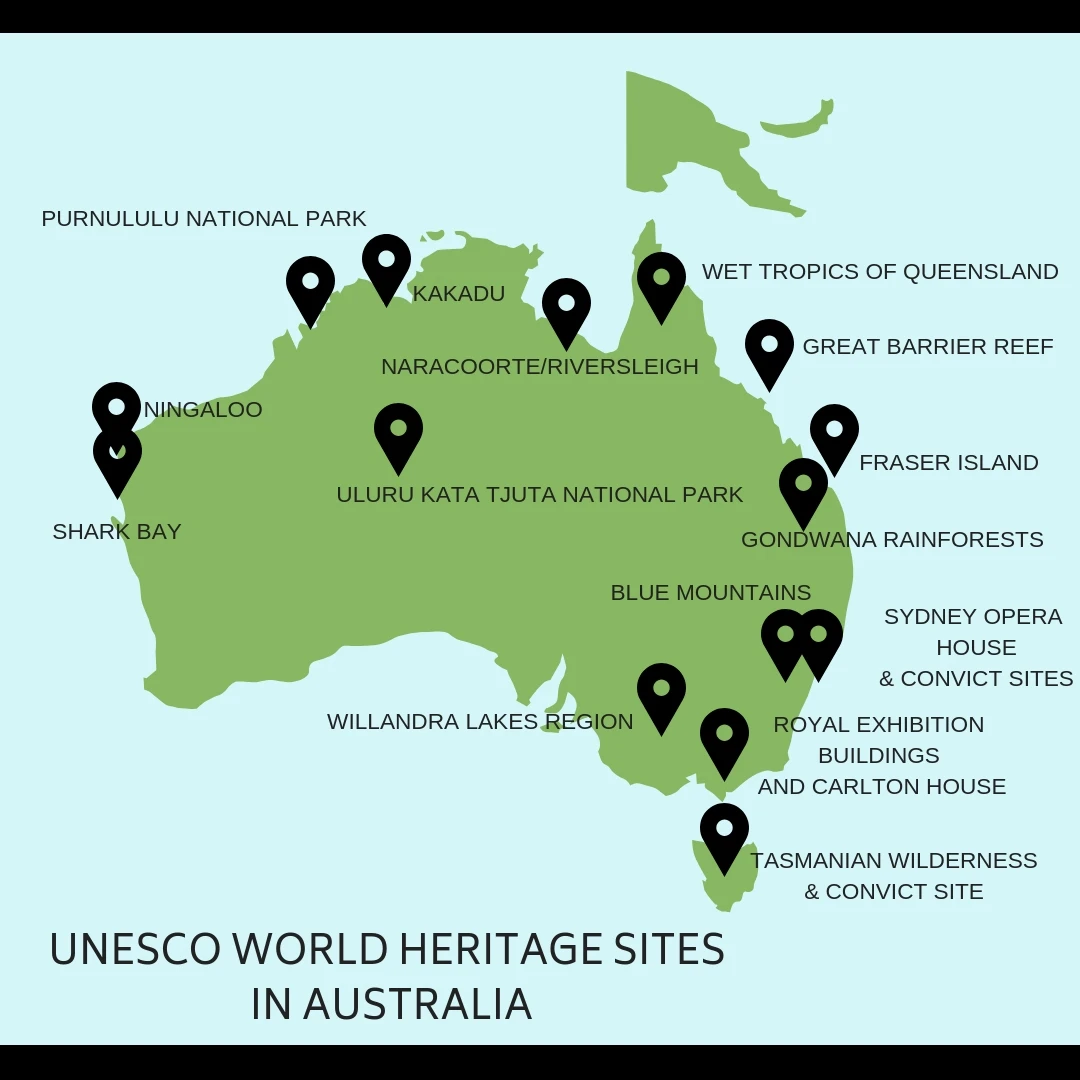
- Australian UNESCO World Heritage Sites
- THE GONDWANA RAINFORESTS
- TASMANIAN WILDERNESS
- NINGALOO COAST
- ULURU-KATATJUTA NATIONAL PARK
- THE WET TROPICS
- NARACOORTE CAVES
- AUSTRALIAN CONVICT SITES – PORT ARTHUR TASMANIA
- SHARK BAY WORLD HERITAGE AREA
- THE BLUE MOUNTAINS
- SYDNEY OPERA HOUSE
- KAKADU NATIONAL PARK
- THE GREAT BARRIER REEF
- PURNULULU NATIONAL PARK
- WILLANDRA LAKES REGION
- ROYAL EXHIBITION BUILDING AND CARLTON GARDENS
- FRASER ISLAND
- HEARD AND MCDONALD ISLANDS/LORD HOWE ISLAND GROUP & MACQUARIE ISLAND
- Further information for visiting Australia
Australian UNESCO World Heritage Sites
THE GONDWANA RAINFORESTS
by Time Travel Turtle
The World Heritage Site of the Gondwana Rainforests of Australia is actually made up of about 40 different locations along the east coast between Newcastle and the Gold Coast. Each of these protected bits of land has plants and animals that have evolved uninterrupted since Australia was part of the supercontinent Gondwanaland, a couple of hundred million years ago!
Not all of the locations are easy to visit and it’s best to go to one of the larger national parks that has a good range of activities. The most popular are Lamington National Park, Barrington Tops National Park, New England National Park and Dorrigo National Park.
The rainforests are quite lush and can be a contrast to the rest of the landscapes in the area, particularly the ones in New South Wales. So the best way to experience the parks is to walk along the tracks, through the trees, over rivers, and to scenic spots like waterfalls. Dorrigo National Park has a viewing platform that lets you look out over the tops of the trees, which is quite impressive too!
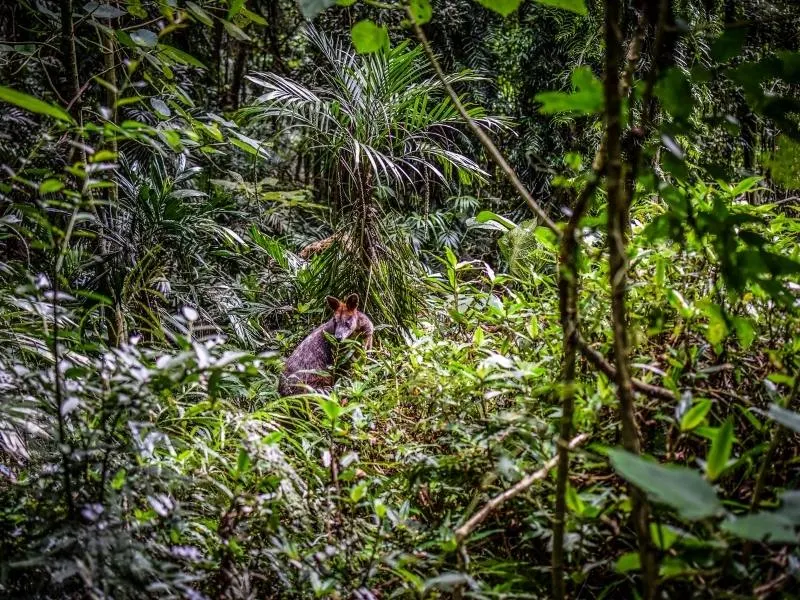
TASMANIAN WILDERNESS
by 50 Shades of Age
In the wild, wild west of Tasmania is the Tasmanian Wilderness World Heritage Area consisting of six national parks and a number of reserves and conservation areas. The vast area covers 15,800 km², or almost 20% of Tasmania, and takes in coast, islands, rivers, peaks, valleys and button grass plains of indescribable beauty and remoteness.
One such National Park is the Cradle Mountain-Lake St Clair National Park, located in the Central Highlands of Tasmania. Thus named for the cradle shape of the mountain that dominates the landscape. The park contains many walking trails, and is renowned for famous Overland Track.
For most visitors to Tasmania Cradle Mountain is a must-see and I would definitely recommend visiting this wonderland of natural rugged beauty.
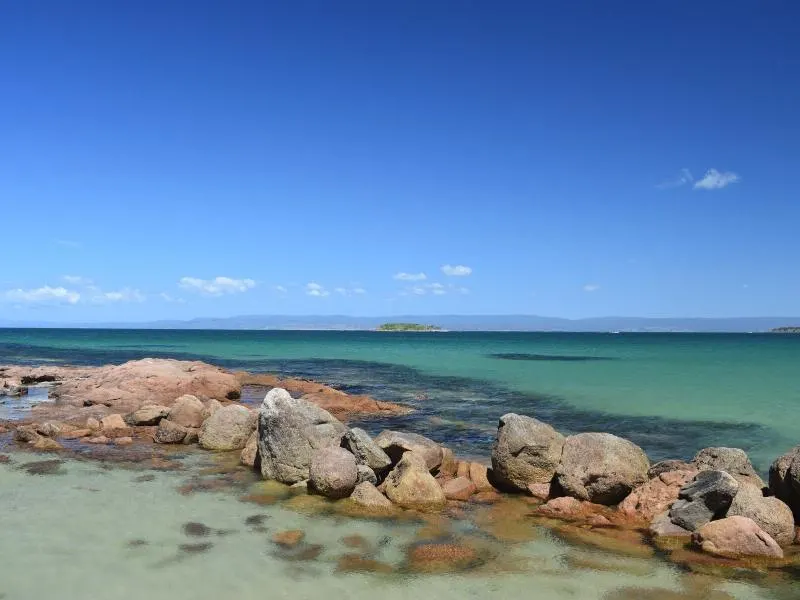
NINGALOO COAST
by Two Tall Travellers
One of my favourite memories of backpacking Australia during our 20,000km road trip was the Ningaloo Coast. It really stands out as a beautiful and eco-friendly destination – and it’s so easy to see how it earned its World Heritage Site status!
The 260-mile long Ningaloo Coast lies in the stunning state of Western Australia. If you get the chance, spend at least a week exploring the reef and its surrounding beaches and towns.
One of the best things to do on the Ningaloo Coast is to swim with humpback whales and whale sharks! These are both truly incredible experiences, and ones that you won’t find in many other places in the world.
If you’d rather stay on dry land, then you’ll still be entertained for days! Go quad biking on the sand dunes, watch the tiny baby turtles hatch and escape to the ocean, enjoy the soft sandy beaches in Cape Range National Park or head up to the Valmingh Head Lighthouse for remarkable panoramic views of both the sunset and the sunrise – one of the few places you can actually see both in Australia.
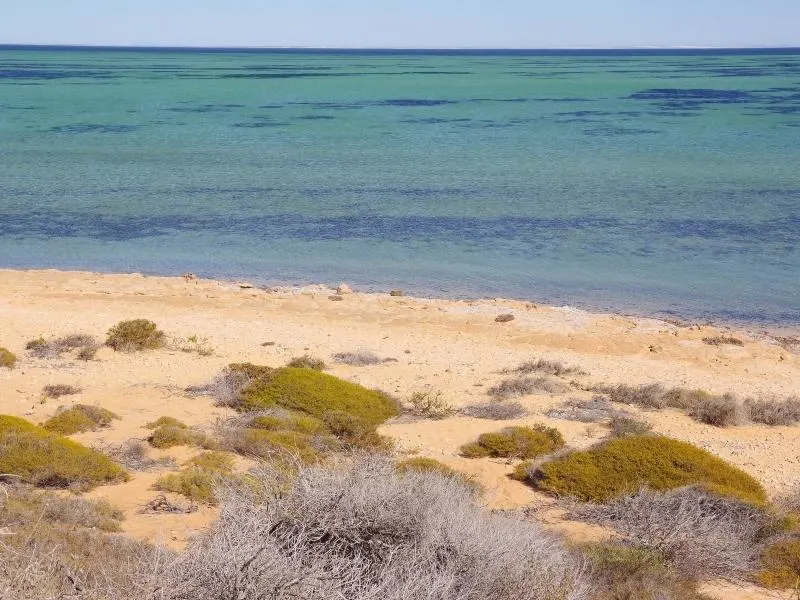
ULURU-KATATJUTA NATIONAL PARK
by Travelexx
What’s the first thing that comes to mind when you think of Australia? Miles upon miles of golden beaches? Verdant rainforests teeming with wildlife? Sydney Opera House? For me it’s always been Uluru – the huge sandstone monolith rising majestically out of the desert.
Seeing it come into view for the first time from the dusty highway is unlike anything I’ve ever experienced. The centrepiece of Uluru-Kata Tjuta National Park, it doesn’t disappoint when up close either.
The 10.6 km base walk is the best way to experience Uluru first-hand. Along the route, you will learn about its significance to the Anangu – traditional landowners of the area – as well as their stories, legends and Aboriginal culture, bringing to life the incredible geological features of the rock. Don’t miss the sunset – the changing of colours over the rock will leave you speechless.
Just 50 kilometres away are the stunning rock domes of Kata Tjuta. Hike through the imposing gorge or tackle the Valley of the Winds walk to get up close to these amazing rock formations, some of which reach as high as 500 metres. Spy birds, reptiles and even wild camels around this site which sees fewer visitors yet offers jaw-dropping views.
Experiencing this corner of the Australian Outback is guaranteed to be an unforgettable experience.
THE WET TROPICS
The Wet Tropics is an area of incredible natural beauty and history in north-east Queensland, Australia. The World Heritage site covers almost 9000km2 between Townsville and Cooktown and is an area of rainforest with plant life found nowhere else on the planet.
The Daintree rainforest is an important region in the Wet Tropics, where you can find evidence of the evolution of plants, as well as memories of megafauna and flora.
David Attenborough has described the Daintree as one of his favourite places to visit, and when you are standing on the pristine white sands of a secluded beach looking up at the canopy of the trees it is not hard to imagine why.
The Daintree is also one of the only places in the world where the rainforest meets the reef, a short boat ride will take you out to another UNESCO site where you can snorkel amongst the largest living organism on Earth – the Great Barrier Reef.
The Daintree region is easily accessible from Cairns in Tropical North Queensland, which is also worthy of an extended stay. There are lots of things to do in the Daintree, including wildlife and crocodile cruising, bushwalking, swimming, visiting the Daintree Discovery Centre, tasting locally made ice cream and more.
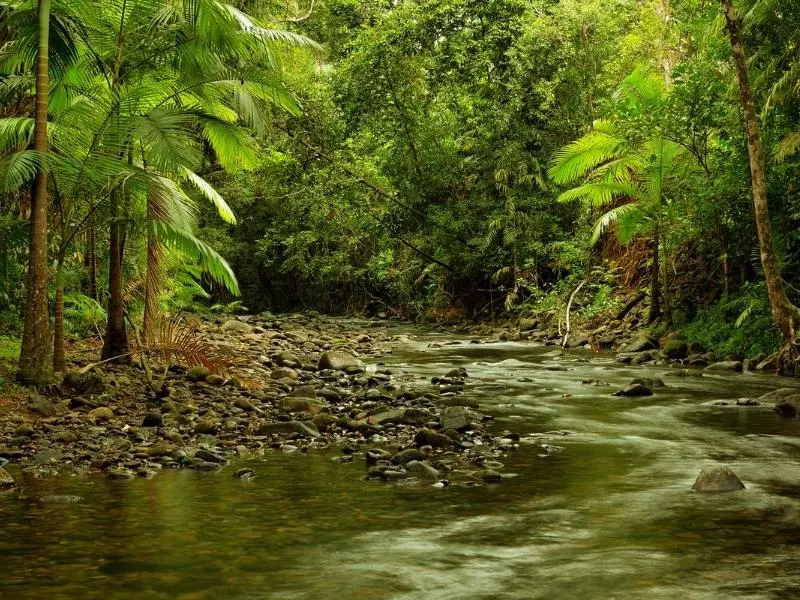
NARACOORTE CAVES
by Josie Wanders
The Naracoorte Caves, located just south of the town of Naracoorte, are South Australia’s only World Heritage site thanks to the fossils that have been found here. The fossils in the caves are up to 500 000 years old, covering several ice ages.
Here is where many of the best specimens of Australia’s unique megafauna such as the marsupial lions and the sthenurine kangaroos are found. Not only are the caves important for their historical record, many of them contain beautiful stalagmites and stalactites too.
Blanche Cave is one of only two known homes of the endangered southern bent-winged bat, and a special tour can show them to you. There are 28 known caves in the national park, but only four of them are accessible to the public. One, Stick-Tomato Cave, is available to visit at any time without a guide.
Most people will just come here to do one of the many easy tours each day, but there are also options for qualified people to do some more adventurous caving too.
Above ground you will find the Wonambi Fossil Centre, where you can spend a bit more time learning about the unique features of this area that have allowed this huge fossil repository to be created and survive.
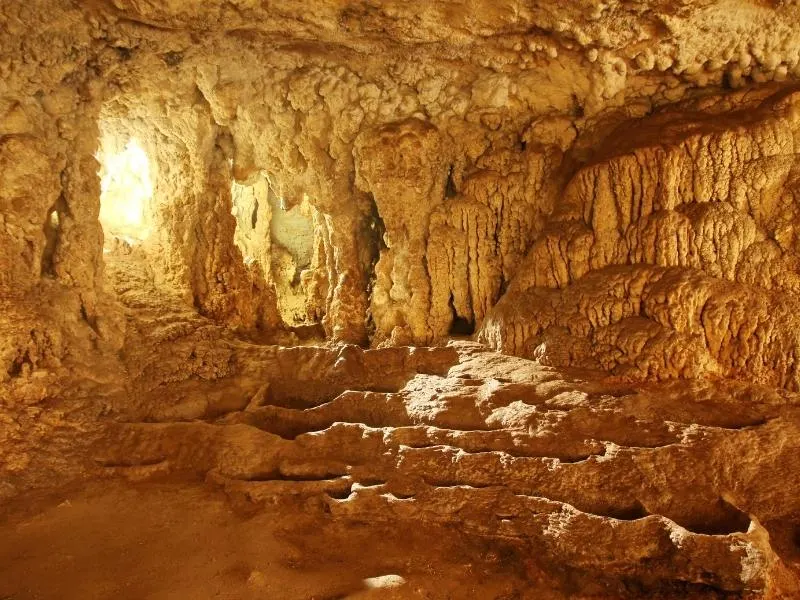
AUSTRALIAN CONVICT SITES – PORT ARTHUR TASMANIA
Out an hour from Hobart, the capital of Tasmania, is the former penal colony of Port Arthur. This is part of Australia’s historical convict trail and a treat for history buffs.
Port Arthur was named after the first governor of the island. It functioned as a penal colony for the hardest of criminals from 1833 to 1853. Port Arthur does an excellent job of promoting its history by maintaining the remains of the colony along with a museum that goes into substantial detail on the convict’s lives.
There are several museums on the property. Two that were especially intriguing were the chapel where the convicts prayed and the cells where they were imprisoned. Several convicts attempted to escape during the colony’s existence. Few were successful.
One escape story tells of a convict that got hold of a kangaroo hide and wore it over his body as he attempted to hop to freedom in disguise. The guards saw a kangaroo, decided they would have kangaroo steaks for dinner that night and proceeded to shot at the convict. Imagine their surprise when the man stood up and surrendered!
This place is full of interesting stories, exhibits and tours. This is certainly a must when visiting Tasmania. Free guided tours are also available.
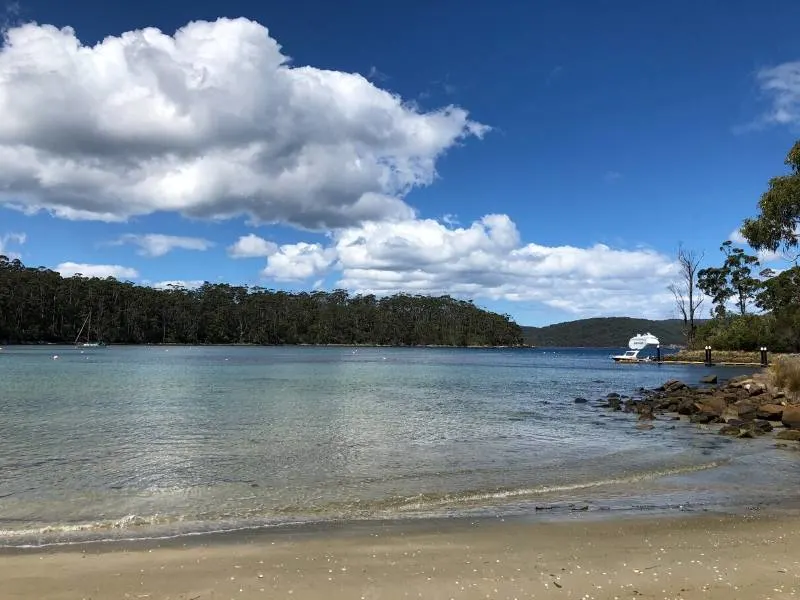
SHARK BAY WORLD HERITAGE AREA
Listed as a World Heritage site in 1991, the Shark Bay region is located on Australia’s most western point and covers over 2.2 million hectares. This incredibly pristine area of wilderness represents a meeting point of three major climatic regions and is home to a range of exceptional plant and animal life.
The turquoise waters are a haven for many marine animals, including loggerhead turtles, one of the world’s largest dugong populations and migrating humpback whales.
These can all be seen on a visit to the Shark Bay region. Most famously though, the area is also home to a large population of dolphins which can be seen daily in the sheltered waters of Monkey Mia.
Also, part of the Shark Bay heritage area is Hamelin Pool Marine and Nature Reserve, which contains some of the world’s most diverse and abundant forms of Stromatolites. These rock-like organisms are some of the oldest living forms on earth.
Not to be missed on a trip to Shark Bay is Shell Beach, voted one of the world’s best beaches by National Geographic. The 70 km long strip of beach is made up of billions of tiny cockle shells.
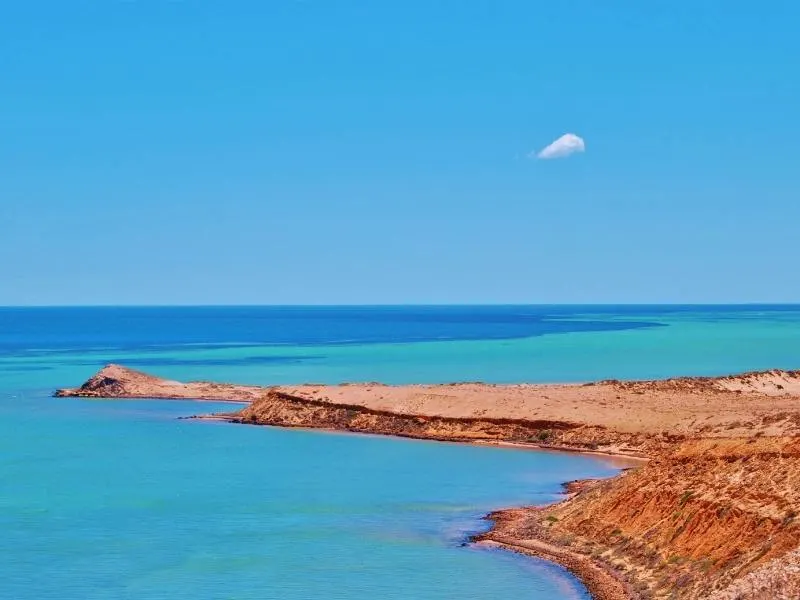
THE BLUE MOUNTAINS
by Walk My World
One hundred kilometres west of Sydney is a place that couldn’t be more different from the big city. At over 2,690 square kilometres, the Blue Mountains is one of the biggest UNESCO World Heritage sites in Australia. Characterised by the sandstone mountains covered in eucalyptus trees, the Blue Mountains is a huge national park that gets its name from the blue haze that is created by the eucalyptus trees releasing their oils into the atmosphere.
It is a stunning place to explore with hundreds of walking trails ranging from easy and flat, to the famous “Six Foot Track” a multi-day epic taking you through the Jamison Valley from Katoomba to Jenolan Caves. It’s one of our favourite places to hike in the whole of Australia.
However, if you are looking for something a bit more sedate, then the view of the Three Sisters, (named after an Aboriginal legend) from Echo Point is the best place to start. From here you also walk to Katoomba Falls with wonderful views of the Jamison Valley.
If you’re visiting with kids a trip to Scenic World with its cable cars and the steepest railway in the world will be a hit. The views are incredible and when you are done with the mountain tops you can head down to the valley floor and look for Lyrebirds (which mimic sounds!)
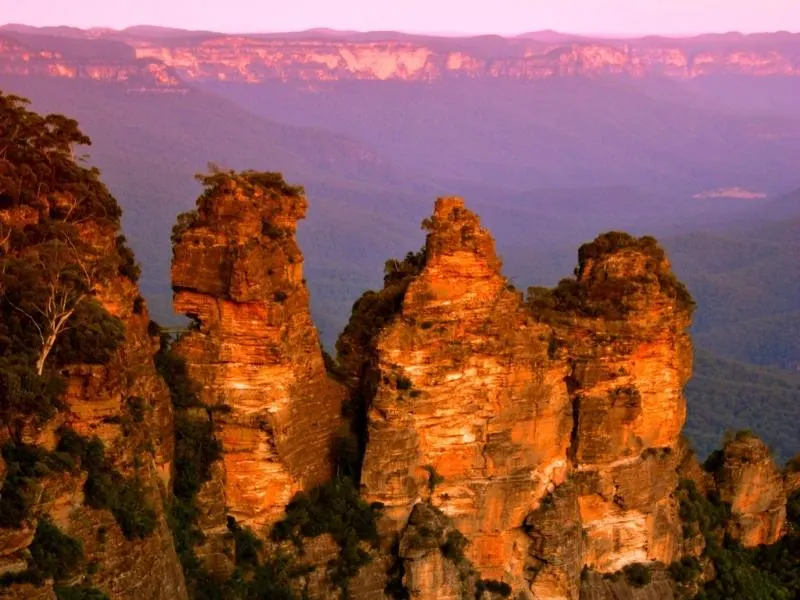
SYDNEY OPERA HOUSE
The Sydney Opera House is one of the great icons of Australia, and one of the best-known, most recognisable buildings in the world. It was built on a headland called Bennelong Point, on the former site of a tram depot. The design competition was won in 1957 by Danish architect Jørn Utzon, and it took until 1973 to complete, with several modifications along the way.
The distinctive white exterior has been compared to sails on a boat and sea shells. The original architect’s sketches even make them look like segments of a piece of fruit, such as a mandarin or orange. Its setting is incredibly dramatic, on the Harbour, facing Sydney’s other great icon, the Harbour Bridge, across the water.
The Opera House is the venue for over 1,000 events a year – covering opera, and across the whole spectrum of music and the performing arts. There is a main auditorium, the Concert Hall, and the smaller Joan Sutherland Theatre and additional venues for smaller productions. Concerts are also held outdoors on the Forecourt of the Opera House.
Sydney Opera House is also one of the centrepieces of the city’s annual Vivid light festival, with projections made onto the surface of the ‘shells’. It’s also one of the main focal points for the spectacular New Year’s Eve fireworks displays that light up the Harbour.
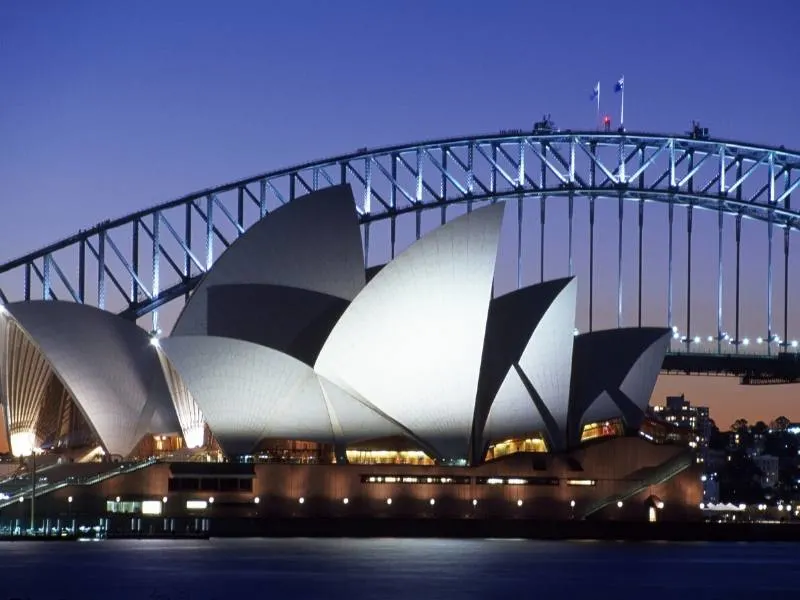
KAKADU NATIONAL PARK
Kakadu National Park is located in the tropical north of Australia, a few hours’ drive to the south-east of Darwin, capital city of the Northern Territory. At approximately 20,000 square kilometres, Kakadu is Australia’s largest national park and is roughly half the size of Switzerland!
In addition to being a UNESCO World Heritage site, it belongs to a very exclusive sub-section of sites: a Mixed site, among those that are considered important for both their cultural heritage, and their natural heritage. Kakadu is home to thundering waterfalls, hidden swimming holes, incredible natural vistas, unique plants and animals, and some of the world’s oldest continuous culture.
For over 50,000 years, indigenous Australians have lived in Kakadu, decorating caves and rock faces with beautiful artwork depicting stories, religious rituals and hunting activities. You could spend weeks in Kakadu and not see everything!
But some of the highlights include Jim Jim Plunge Pool, Maguk Falls, the Nourlangie Rock Art, Twin Falls Gorge & Plateau, and finally Ubirr Walk for sunset. These alone will take you a couple of days – remember that distances out here are vast and roads are rough!
I also strongly recommend a crocodile spotting tour as well; the saltwater crocs in Kakadu are both huge and terrifying! Check out World Heritage Journey on YouTube for great videos of over 400 UNESCO World Heritage Sites!
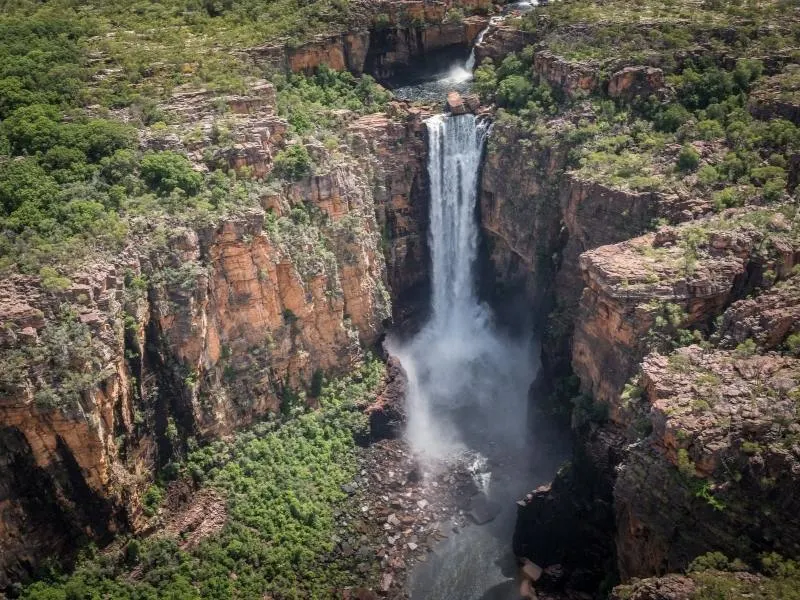
THE GREAT BARRIER REEF
by Our 3 Kids V The World
The Great Barrier Reef is by far Australias most famous landmark and is the world’s largest coral reef system and can be seen from outer space. It covers an area of 344,400 square kilometres and is located in the Coral Sea off the coast of Queensland.
It was selected as a UNESCO World Heritage site in 1981 and in many circles is referred to as one of the seven natural wonders of the world and is mostly protected by the Great Barrier Reef Marine Park.
Recently there have been concerns regarding the Great Barrier Reef due to coral bleaching is more widespread than first thought and the effects of global warming will play a large part in the future of the famous landmark. Many thousands of people visit the Great Barrier Reef for amazing snorkelling and scuba diving.
I have visited both ends of the Great Barrier Reef, Whitehaven Beach near Airlie Beach at the southern end and Port Douglas at the northern end of the reef. Both are spectacular.
If you are visiting Australia I highly recommend a visit to the Great Barrier Reef as over the upcoming years, the reef will face significant challenges. I hope that we are able to rectify the current issues and it will remain as beautiful as it is today.
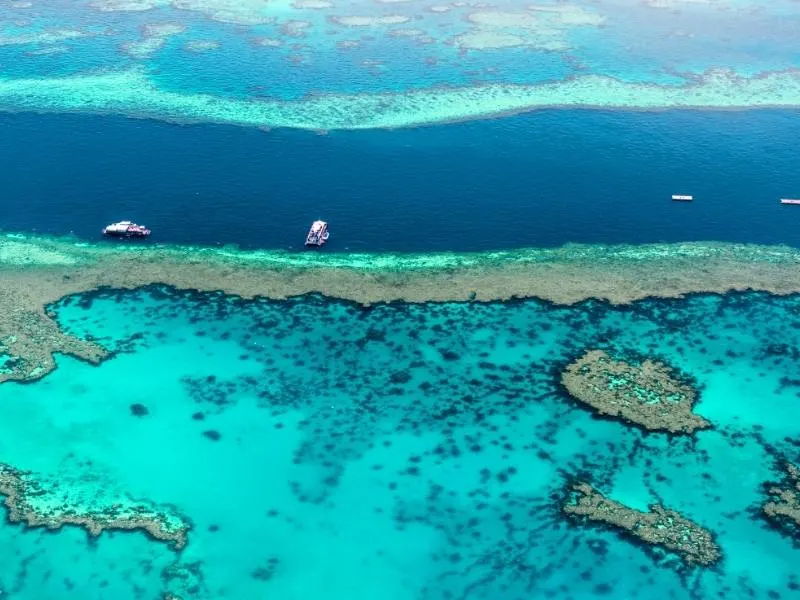
PURNULULU NATIONAL PARK
by LVV Travel
Purnululu National Park (aka the Bungle Bungles) feels like a place in the middle of nowhere because it kinda is. The nearest capital city is Darwin, just a short 14 hour drive away. Located in the East Kimberly region of WA, it’s 239,723-hectares of complete wilderness – some 300km south of Kununurra.
Amongst the wilderness is the Bungle Bungle Range, a spectacular landscape of beehive-shaped rocks so big that the only way to see them all is from the sky. Start in the southern section of the park to stay your hike through Piccaninny Gorge and see the splendour of Cathedral Gorge.
The northern section of the park is separated by around 50km of corrugated road. Be sure to go to Kungkalanayi Lookout for a panoramic view of the vast, unspoilt and breathtaking landscapes. Coming here without a 4WD is asking for trouble.
Be prepared with adequate fuel, water and food and note that the park closes in the wet season and usually reopens in early April (weather permitting). If wilderness is your kind of adventure, Purnululu is perfect.
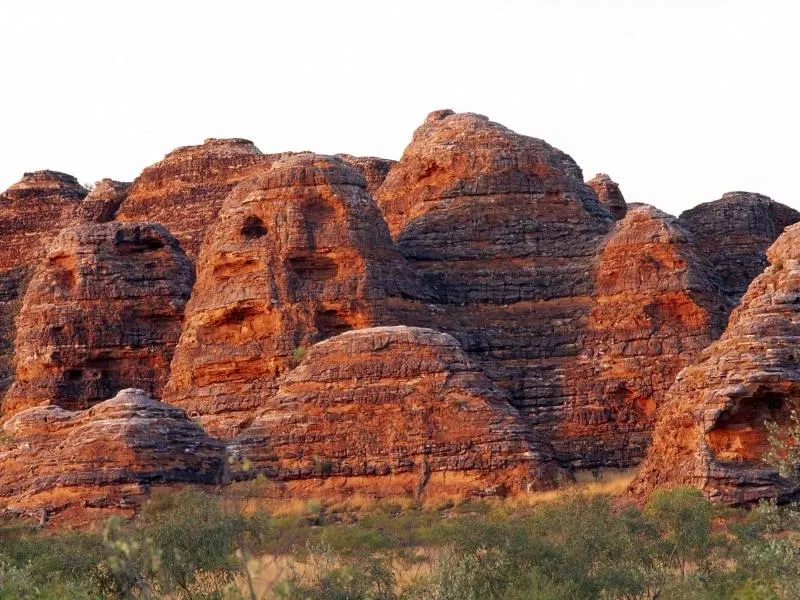
WILLANDRA LAKES REGION
by Small Footprints, Big Adventures
Willandra Lakes World Heritage Area in south-western New South Wales is a surreal landscape, with lunettes formed by wind and water, desert, sandhills and ancient remains.
It is home to Mungo National Park, where visitors can come to camp and learn about aboriginal history and the significance of Mungo to the Ngyiampaa, Mutthi Mutthi and Southern Paakantyi people.
Mungo Lady was discovered in 1968, and she is the oldest evidence of a ritual burial in the world. She and Mungo Man have been dated at more than 40,000 years old! Preserved footprints from more than 20,000 years ago still remain within Mungo, as well as many other archaeologically- and culturally significant sites.
These include ancient fireplaces, stone tools and calcified plants, and taking a tour with a ranger allows you to get close to them and hear about when and how they were used.
Further from the guided visitor area, you can ride or drive around a pastoral loop for wildlife spotting and viewing of old homesteads, and camping overnight along the way is a common activity.
We loved learning about the wonders that are in our own backyard and experiencing the ancient and unusual landscape at Mungo.
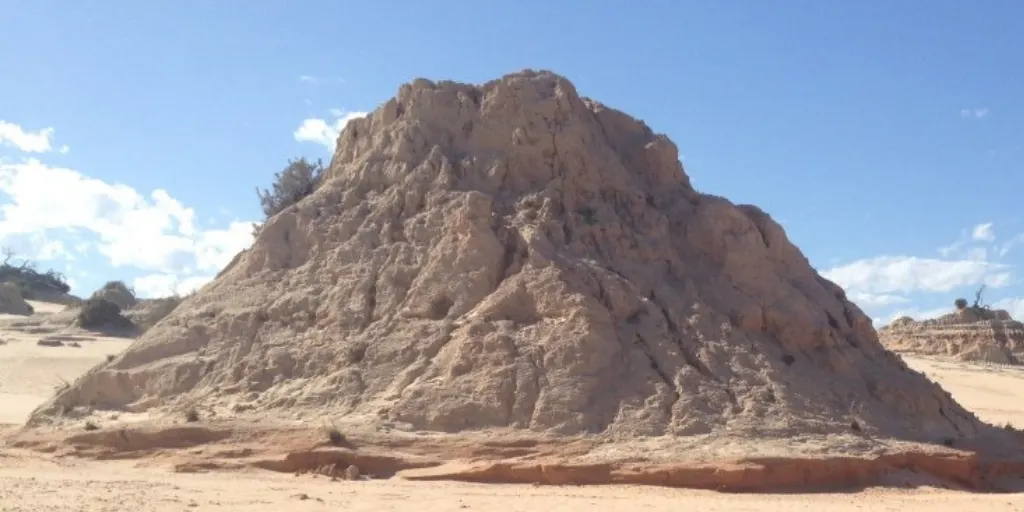
ROYAL EXHIBITION BUILDING AND CARLTON GARDENS
The Royal Exhibition Building was built in 1880. The grand building was built in a typical European style to house the great exhibitions that came to Melbourne in 1880 and 1888. Located today on what is the edge of the Melbourne CBD it strikes a fine design of a bygone era. In 1901 it played a unique part in Australian history as it hosted the first sitting of the Parliament of Australia.
The grand old building has undergone many restorations over the years to bring to the state it is in today. Speaking of today, the Royal Exhibition Building hosts many annual shows such as the flower show, Melbourne International beer festival, and the rights of passage Tattoo festival.
UNESCO says the surrounding Carlton Gardens are an example of Victorian landscape design with sweeping lawns and varied European and Australian tree plantings, The Gardens are often full of people relaxing in one of Melbourne’s greatest green spaces.
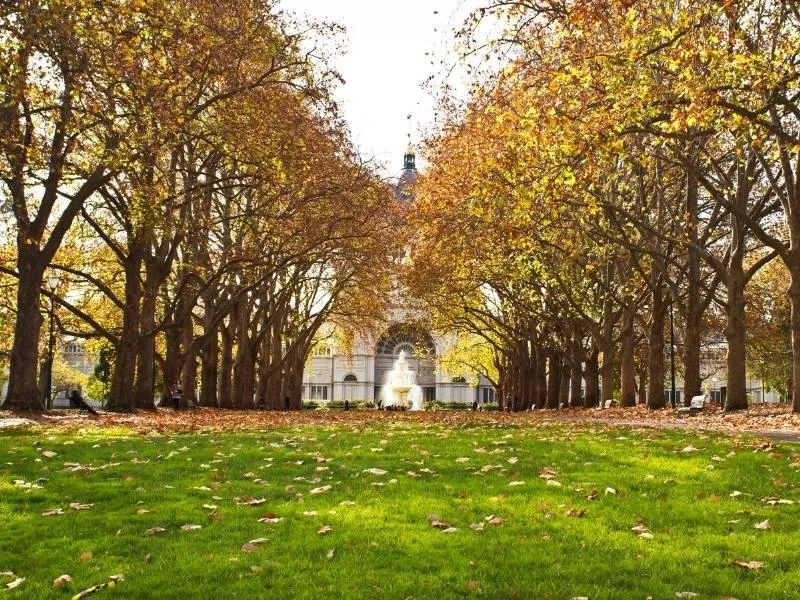
FRASER ISLAND
Lying off the East Coast of Australia, just north of Brisbane, is Fraser Island one of Queensland’s must-visit attractions. At 120km long, this is the worlds biggest sand island and was awarded World Heritage Site status in 1992.
Only accessible by 4WD vehicles, the best way to make the most of Fraser is to find an organised tour. Usually, these run for 3 days/ 2 nights, and so you will camp out in the wilderness. Access is from a ferry around the Rainbow Beach area.
One of the biggest attractions is Lake Mackenzie, a freshwater lake surrounded by sand which is nearly pure silica. This gives the sand a near pure white appearance, and is a striking and beautiful sight next to the incredibly clear water.
If you are lucky, you may spot a resident dingo. The Dingoes of Fraser Island is thought to be the last purebred left in Australia, and in an effort to preserve this, dogs are not permitted on the island.
Another popular landmark is the shipwreck of the S.S Maheno. The boat was beached in a cyclone in 1935 and still sits on the sands of Fraser Island to this day.
With plenty of other swimming holes, 4WD tracks and viewpoints, there is plenty to keep visitors busy on Fraser Island.
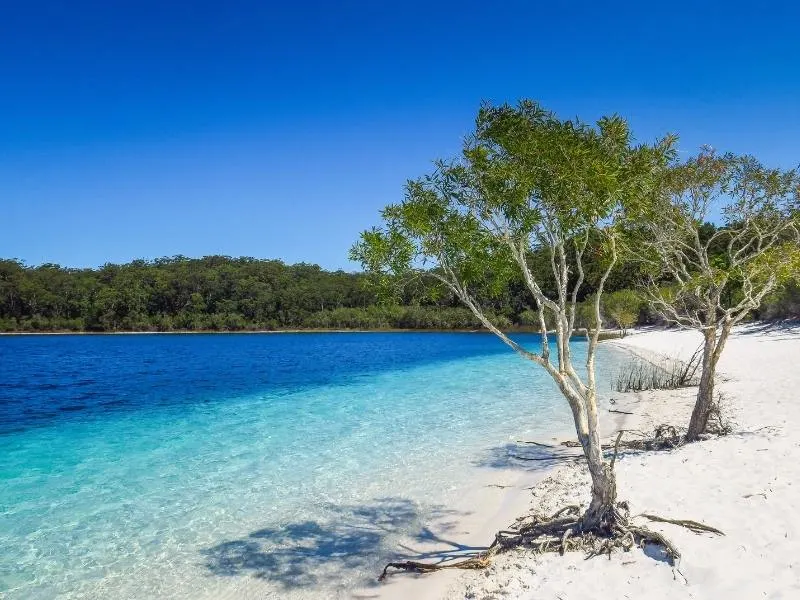
HEARD AND MCDONALD ISLANDS/LORD HOWE ISLAND GROUP & MACQUARIE ISLAND
Heard and McDonald Islands
Heard Island and McDonald Islands are located in the Southern Ocean, approximately 1,700 km from the Antarctic continent and 4,100 km south-west of Perth. As the only volcanically active subantarctic islands they ‘open a window into the earth’, thus providing the opportunity to observe ongoing geomorphic processes and glacial dynamics. The distinctive conservation value of Heard and McDonald – one of the world’s rare pristine island ecosystems – lies in the complete absence of alien plants and animals, as well as human impact.
Information from the UNESCO World Heritage Site
Lord Howe Island Group
A remarkable example of isolated oceanic islands, born of volcanic activity more than 2,000 m under the sea, these islands boast a spectacular topography and are home to numerous endemic species, especially birds.
Information from the UNESCO World Heritage Site
Macquarie Island
Macquarie Island (34 km long x 5 km wide) is an oceanic island in the Southern Ocean, lying 1,500 km south-east of Tasmania and approximately halfway between Australia and the Antarctic continent.
The island is the exposed crest of the undersea Macquarie Ridge, raised to its present position where the Indo-Australian tectonic plate meets the Pacific plate.
It is a site of major geoconservation significance, being the only place on earth where rocks from the earth’s mantle (6 km below the ocean floor) are being actively exposed above sea level. These unique exposures include excellent examples of pillow basalts and other extrusive rocks.
Information from the UNESCO World Heritage Site
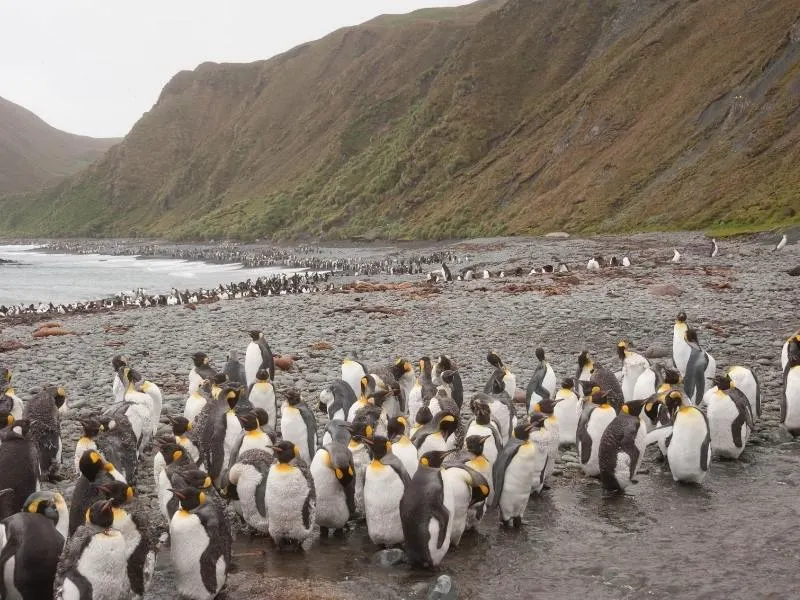
Further information for visiting Australia
Thanks to all the great travel bloggers who took part in this collaboration on UNESCO World Heritage Sites in Australia.
If you are planning to visit Australia read my Australia Travel Guide which includes links to all my articles about the country.
Read

